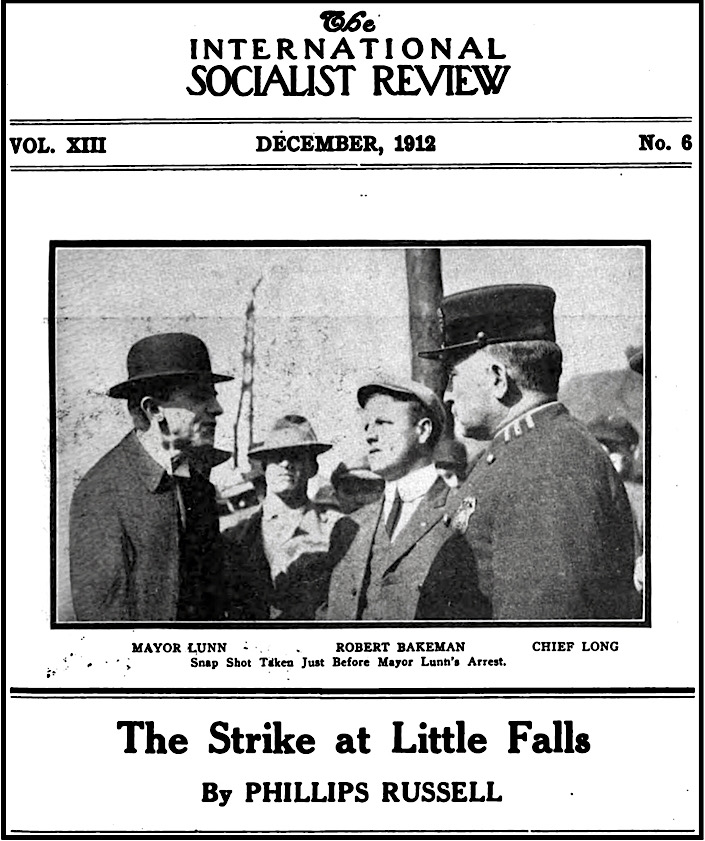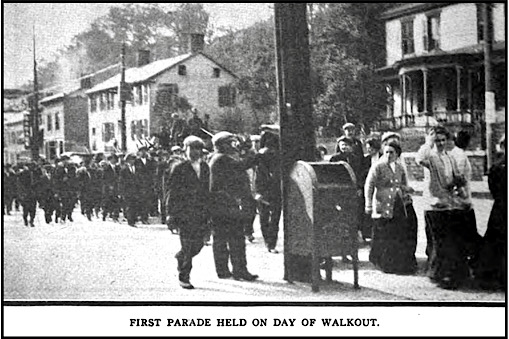 —————
—————
Hellraisers Journal – Tuesday December 3, 1912
Little Falls, New York – Textile Workers Revolt Against Pay Cut, Part II
From the International Socialist Review of December 1912:
[Part II of II]
Shortly after [the October 30th] affair the strikers and the strike committee were holding a meeting in The Slovak Sokol Hall, the principal social center of the working population, when the door was thrown open with a crash and the police and hired guards burst in. Women, who composed the majority of the audience, were hurled right and left. Men who protested were struck on the head. Furniture was overturned. The musical instruments of the Slovak Band were broken and battered. One cop who happened to notice the framed charter of the local textile union of the Industrial Workers of the World, drove his club through the middle of it. It hangs in the hall now, its broken glass held together by an edging of red ribbon with a knot of red covering the hole made by the club. All the members of the strike committee and all persons suspected of being connected with the strike were arrested and dragged to the local lock-up, a place so vile that the State Prison Inspector has threatened the town with mandamus proceedings unless it is cleaned up.
Legere, however, could not be found. The building was searched for him and the police, not wishing to investigate the dark cellar, fired three shots into it at random, any one of which might have killed Legere had he not already been taken to a place of safety by a devoted band of workers. He went to Utica that night, got some needed printing done, sent off some messages, and then returned to Little Falls where he was immediately arrested and taken to the county jail at Herkimer, another place that has been condemned by the State Prison Inspector.
Bakeman, Hirsh, Bochino and George Vaughan of Schenectady, were already there, along with thirty-nine others, strikers and sympathizers. When visited later, some of them were still wearing the bloody shirts that they wore when arrested. They were joined by Miss Helen Schloss, a young Socialist woman of New York, who for several months had been a tenement investigator for a club of the well-to-do women of Little Falls. Despite warnings from her lady employers, Miss Schloss cast her lot with the strikers, gave up her position, joined the relief committee, and went out on the picket line with the workers. For this she incurred the enmity of the police and her spectacular arrest by Chief Long himself followed. She was put in Herkimer jail on a charge of “inciting to riot” and as a special honor was given the cell occupied by Chester Gillette, electrocuted for the murder of his sweetheart. She was finally released on bail and went right back to work in the relief kitchen.


